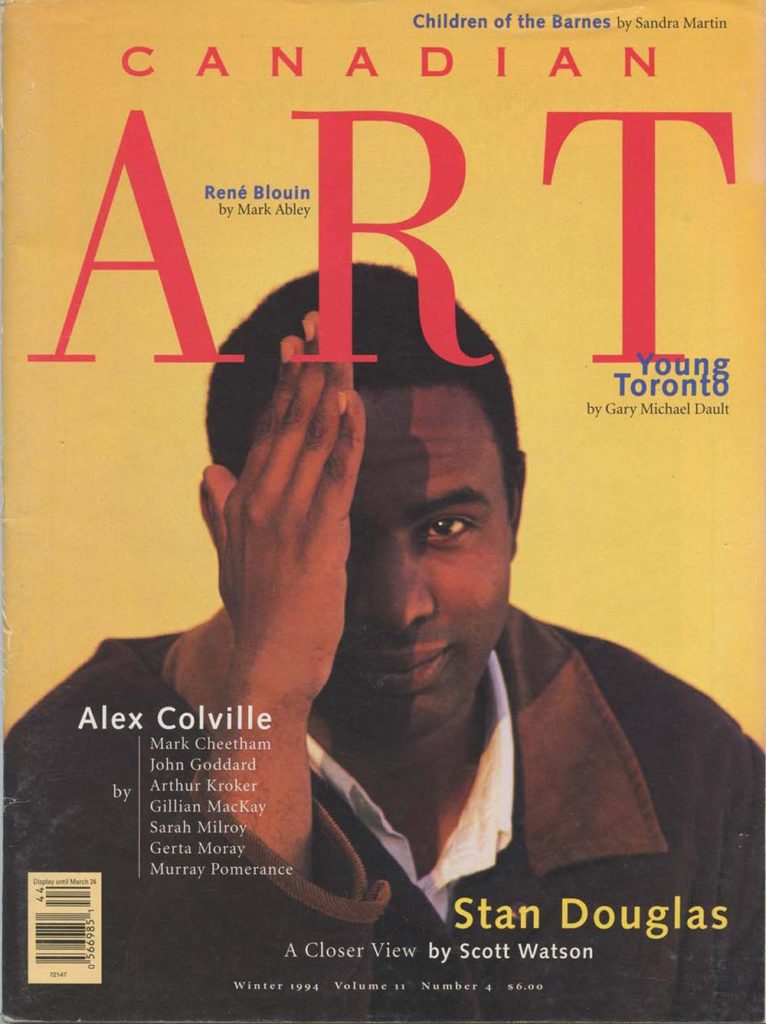Some histories are told and others aren’t. Some reflect what the French philosopher Jean-François Lyotard has called the “master narrative”: the story we hear proclaimed most often, and that provides the groundwork for our understanding of the world. Other stories are murmured periodically, spoken in fragments only to fall again into silence. Theorists of postmodernism claim that this is what the commotion of our present cultural moment is all about: the loop of the master narrative has been broken, and other long-silenced voices can now be heard. Stan Douglas’ art operates amid this fragmentation of old norms. He is interested in how one comes to understand history, and how one situates oneself within it as an artist. Douglas explores what he calls “idiomatic languages” of media to probe or discover how identity—that supposedly permanent thing we call the self—is shaped by the changing regimes of representation.
As a person of colour who grew up in Vancouver’s homogenously prosperous white Point Grey district, Douglas knows what it is like to be excluded from the picture, not to see oneself in the mirror the image industry holds up to youth. As he put it in a recent interview: “The doubt, that pronounal doubt, doubt of pronouns, doubt of the certainty of an I, is the a priori of my work. And it’s a doubt which is understood by people who are outside of the dominant representation.”
So begins our Winter 1994 cover story. To keep reading, view a PDF of the entire article.









